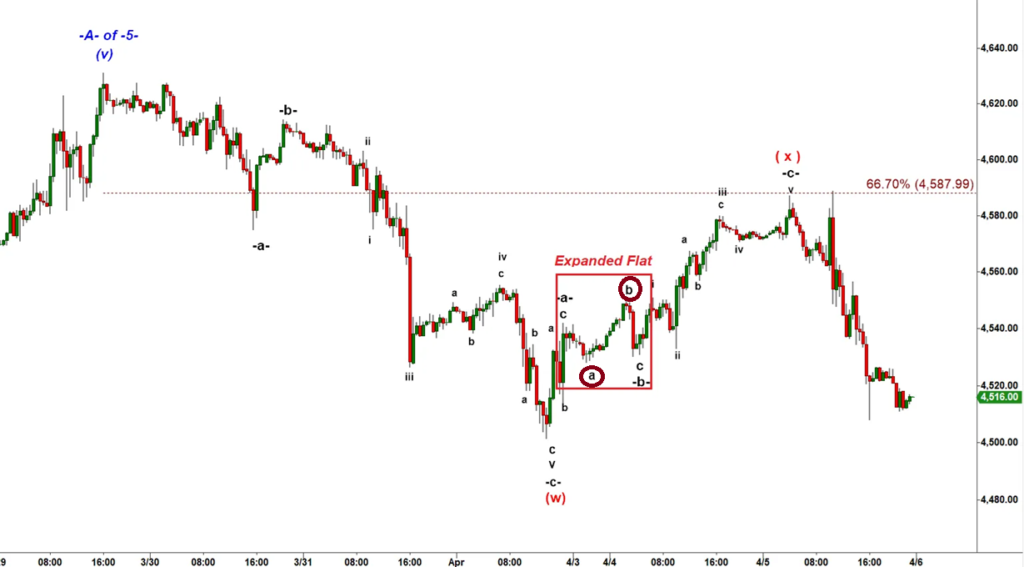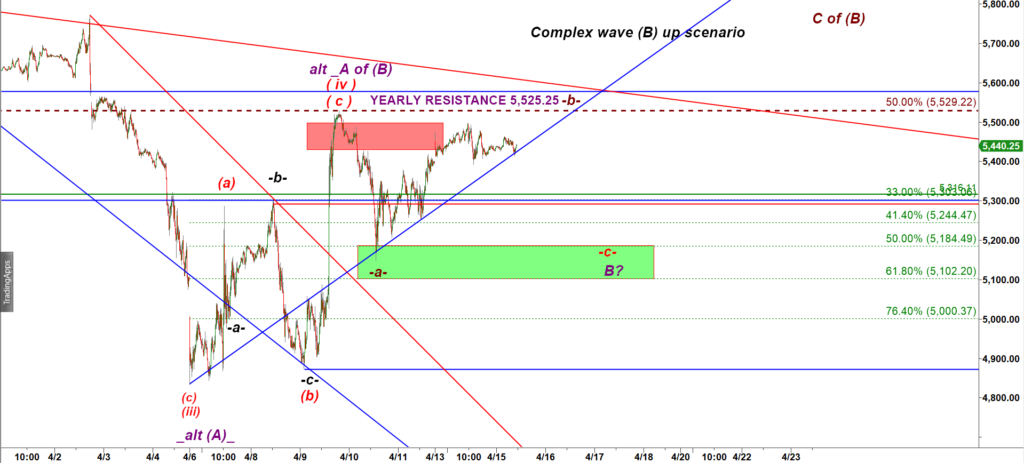$ES #ES-mini #Elliott Wave
What makes a wave b up inside a corrective a down, b up, c down structure a challenge for a trader? That is the nature of that wave which normally takes 2x to 4x times more than wave a down took. In the course of wave a down traders get accustomed to fast moving markets. Bears thrive. They get convinced finally this is their time. The first bounce off a low stille feels like fast paced fun to trade move. But then every next move gets slower. Cheer is gone again!

That is a fractal played out a couple of year ago. Read my article explaining that fractal in depth.
Note that -a- up, the first a-b-c up was a fast paced move. Then a crappy wave -b- down started. And the worst part of it was a grinding subwave b up that even managed to make a higher high over the top of -a- up!
Now let’s look at what we have at our current charts:

ES-mii 15 min chart
Check, the first (a)-(b)-(c) up off the low made on Sunday April 6th was a fun to trade. I nailed the top of that move (see the red box). Then a tough part of that show started. Look at the quick drop in -a- down. And from the bottom of -a- down the toughest part started. That is annoying subwave -b- up of the wave B down.
Again, the main problem is that everyone believes its a corrective move yet it keeps holding.
If you are a wave trader and you love to trade pullbacks you’d better make a tattoo on your right arm:
“Expect Wave B to last 2x to 4x times more than wave A took”.
The most painful scenario if bulls manage to squeeze one more push up and play a fake breakout over 5,525.25 Yearly Pivot. That would be the perfect and the most painful completion of the subwave -b- up.
Once that -b- up gets completed I expect to get a quick and sharp drop in a subwave -c- down.
Note, the wave -c- down quite often takes much less time than wave -a- down and wave -b- up.